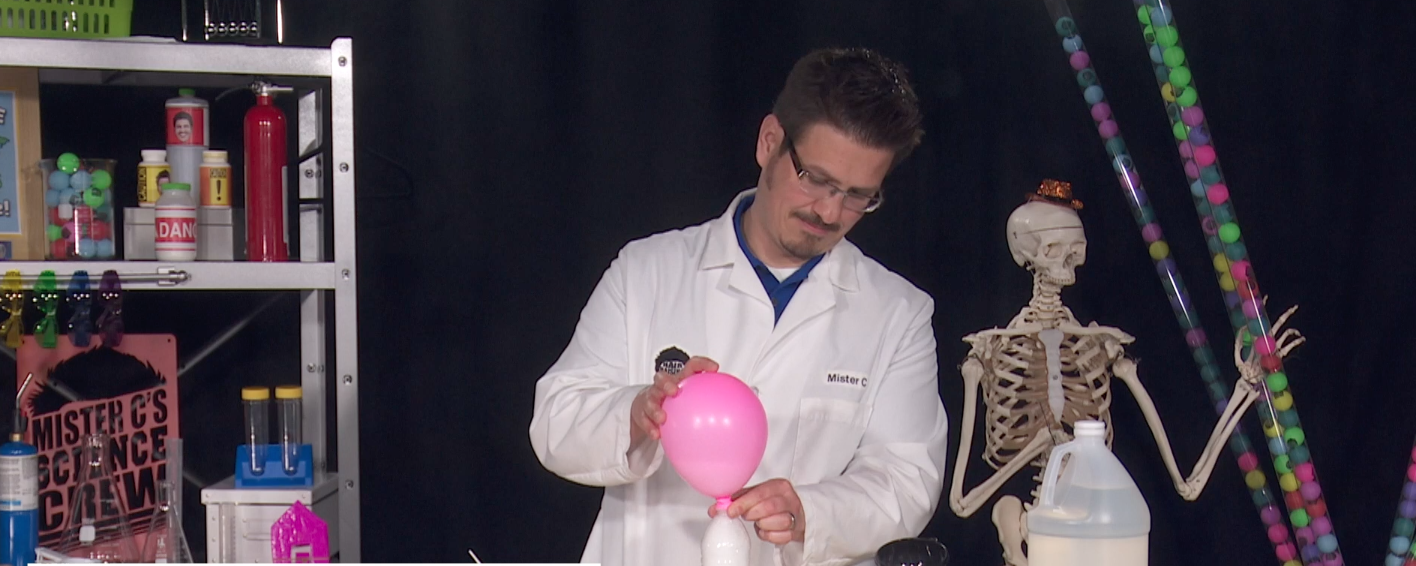Carbon Dioxide Balloon

Chemical reactions can change the world!
- A 12” balloon
- Vinegar
- Small funnel
- baking soda
- Spoon
- Empty water bottle
Step 1: Gather materials.
Step 2: Pour ⅓ cup of vinegar into the water bottle.
Step 3: Using the funnel, fill the balloon with ⅓ cup of baking soda.
Step 4: Attach the balloon to the mouth of the bottle being careful not to let the baking soda fall into the vinegar.
Step 5: Once the balloon is attached securely, carefully lift the balloon to empty the baking soda into the bottle.
Step 6: Use your sense of sight, smell and touch to observe what’s happening.
Chemical reactions are processes that take one or more substances, the reactants, and change them into one or more new substances, the products.When you combine baking soda and vinegar (the reactants) a chemical reaction occurs. As the atoms are rearranged, a gas called carbon dioxide (the product) is formed. Carbon Dioxide - CO2 - is the same gas you breathe out when you exhale.
When the reaction occurs, the gas molecules produced need space and spread out. They start bumping into the bottle and move up into the balloon causing pressure. As More and more gas is produced, the balloon begins to inflate. Did you notice how the temperature of the bottle? This chemical reaction causes the bottle to feel cold because this is endothermic reaction.
A chemist tests and develops products such as medicine, cosmetics and materials. They experiment with chemicals to make products better, safer or more eco friendly.
Did you know that some fire extinguishers are filled with liquid carbon dioxide? When the trigger is pulled, the liquid rushes out and expands into a gas. Carbon dioxide molecules are more dense than oxygen. The carbon dioxide gas puts out the fire because the heavier carbon dioxide pushes the oxygen out of the way and the fire is smothered and cannot continue burning.
You just completed the “Carbon Dioxide Balloon” experiment. To make this a true experiment, try changing a variable:
- What if you tried using a 2-liter bottle?
- What if you tried different amounts of vinegar or baking soda? Which combination produces the most gas?
- What if you warm up the vinegar? (If you put vinegar in the microwave, be sure you ask an adult to help you.)
Watch the Air is Everywhere Music Video!

